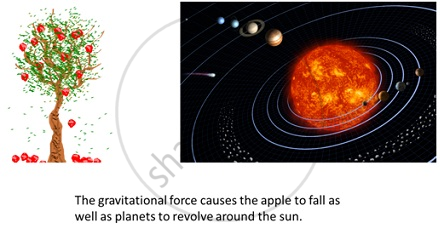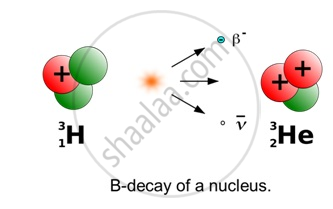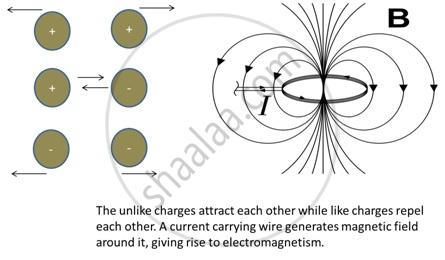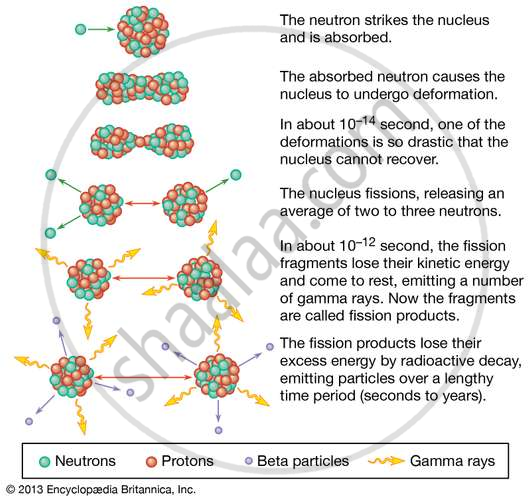Topics
Physical World and Measurement
Physical World
Units and Measurements
- International System of Units
- Measurement of Length
- Measurement of Mass
- Measurement of Time
- Accuracy, Precision and Least Count of Measuring Instruments
- Errors in Measurements
- Significant Figures
- Dimensions of Physical Quantities
- Dimensional Formulae and Dimensional Equations
- Dimensional Analysis and Its Applications
- Need for Measurement
- Units of Measurement
- Fundamental and Derived Units
- Length, Mass and Time Measurements
- Introduction of Units and Measurements
Motion in a Straight Line
- Position, Path Length and Displacement
- Average Velocity and Average Speed
- Instantaneous Velocity and Speed
- Kinematic Equations for Uniformly Accelerated Motion
- Acceleration (Average and Instantaneous)
- Relative Velocity
- Elementary Concept of Differentiation and Integration for Describing Motion
- Uniform and Non-uniform Motion
- Uniformly Accelerated Motion
- Position-time, Velocity-time and Acceleration-time Graphs
- Position - Time Graph
- Relations for Uniformly Accelerated Motion (Graphical Treatment)
- Introduction of Motion in One Dimension
- Motion in a Straight Line
Kinematics
Motion in a Plane
- Scalars and Vectors
- Multiplication of Vectors by a Real Number or Scalar
- Addition and Subtraction of Vectors - Graphical Method
- Resolution of Vectors
- Vector Addition – Analytical Method
- Motion in a Plane
- Motion in a Plane with Constant Acceleration
- Projectile Motion
- Uniform Circular Motion (UCM)
- General Vectors and Their Notations
- Motion in a Plane - Average Velocity and Instantaneous Velocity
- Rectangular Components
- Scalar (Dot) and Vector (Cross) Product of Vectors
- Relative Velocity in Two Dimensions
- Cases of Uniform Velocity
- Cases of Uniform Acceleration Projectile Motion
- Motion in a Plane - Average Acceleration and Instantaneous Acceleration
- Angular Velocity
- Introduction of Motion in One Dimension
Laws of Motion
Work, Energy and Power
Laws of Motion
- Aristotle’s Fallacy
- The Law of Inertia
- Newton's First Law of Motion
- Newton’s Second Law of Motion
- Newton's Third Law of Motion
- Conservation of Momentum
- Equilibrium of a Particle
- Common Forces in Mechanics
- Circular Motion and Its Characteristics
- Solving Problems in Mechanics
- Static and Kinetic Friction
- Laws of Friction
- Inertia
- Intuitive Concept of Force
- Dynamics of Uniform Circular Motion - Centripetal Force
- Examples of Circular Motion (Vehicle on a Level Circular Road, Vehicle on a Banked Road)
- Lubrication - (Laws of Motion)
- Law of Conservation of Linear Momentum and Its Applications
- Rolling Friction
- Introduction of Motion in One Dimension
Work, Energy and Power
- Introduction of Work, Energy and Power
- Notions of Work and Kinetic Energy: the Work-energy Theorem
- Kinetic Energy (K)
- Work Done by a Constant Force and a Variable Force
- Concept of Work
- Potential Energy (U)
- Conservation of Mechanical Energy
- Potential Energy of a Spring
- Various Forms of Energy : the Law of Conservation of Energy
- Power
- Collisions
- Non - Conservative Forces - Motion in a Vertical Circle
Motion of System of Particles and Rigid Body
System of Particles and Rotational Motion
- Motion - Rigid Body
- Centre of Mass
- Motion of Centre of Mass
- Linear Momentum of a System of Particles
- Vector Product of Two Vectors
- Angular Velocity and Its Relation with Linear Velocity
- Torque and Angular Momentum
- Equilibrium of Rigid Body
- Moment of Inertia
- Theorems of Perpendicular and Parallel Axes
- Kinematics of Rotational Motion About a Fixed Axis
- Dynamics of Rotational Motion About a Fixed Axis
- Angular Momentum in Case of Rotation About a Fixed Axis
- Rolling Motion
- Momentum Conservation and Centre of Mass Motion
- Centre of Mass of a Rigid Body
- Centre of Mass of a Uniform Rod
- Rigid Body Rotation
- Equations of Rotational Motion
- Comparison of Linear and Rotational Motions
- Values of Moments of Inertia for Simple Geometrical Objects (No Derivation)
Gravitation
Gravitation
- Kepler’s Laws
- Newton’s Universal Law of Gravitation
- The Gravitational Constant
- Acceleration Due to Gravity of the Earth
- Acceleration Due to Gravity Below and Above the Earth's Surface
- Acceleration Due to Gravity and Its Variation with Altitude and Depth
- Gravitational Potential Energy
- Escape Speed
- Earth Satellites
- Energy of an Orbiting Satellite
- Geostationary and Polar Satellites
- Weightlessness
- Escape Velocity
- Orbital Velocity of a Satellite
Properties of Bulk Matter
Mechanical Properties of Solids
- Elastic Behaviour of Solid
- Stress and Strain
- Hooke’s Law
- Stress-strain Curve
- Young’s Modulus
- Determination of Young’s Modulus of the Material of a Wire
- Shear Modulus or Modulus of Rigidity
- Bulk Modulus
- Application of Elastic Behaviour of Materials
- Elastic Energy
- Poisson’s Ratio
Thermodynamics
Behaviour of Perfect Gases and Kinetic Theory of Gases
Mechanical Properties of Fluids
- Thrust and Pressure
- Pascal’s Law
- Variation of Pressure with Depth
- Atmospheric Pressure and Gauge Pressure
- Hydraulic Machines
- Streamline and Turbulent Flow
- Applications of Bernoulli’s Equation
- Viscous Force or Viscosity
- Reynold's Number
- Surface Tension
- Effect of Gravity on Fluid Pressure
- Terminal Velocity
- Critical Velocity
- Excess of Pressure Across a Curved Surface
- Introduction of Mechanical Properties of Fluids
- Archimedes' Principle
- Stoke's Law
- Equation of Continuity
- Torricelli's Law
Oscillations and Waves
Thermal Properties of Matter
- Heat and Temperature
- Measurement of Temperature
- Ideal-gas Equation and Absolute Temperature
- Thermal Expansion
- Specific Heat Capacity
- Calorimetry
- Change of State - Latent Heat Capacity
- Conduction
- Convection
- Radiation
- Newton’s Law of Cooling
- Qualitative Ideas of Black Body Radiation
- Wien's Displacement Law
- Stefan's Law
- Anomalous Expansion of Water
- Liquids and Gases
- Thermal Expansion of Solids
- Green House Effect
Thermodynamics
- Thermal Equilibrium
- Zeroth Law of Thermodynamics
- Heat, Internal Energy and Work
- First Law of Thermodynamics
- Specific Heat Capacity
- Thermodynamic State Variables and Equation of State
- Thermodynamic Process
- Heat Engine
- Refrigerators and Heat Pumps
- Second Law of Thermodynamics
- Reversible and Irreversible Processes
- Carnot Engine
Kinetic Theory
- Molecular Nature of Matter
- Gases and Its Characteristics
- Equation of State of a Perfect Gas
- Work Done in Compressing a Gas
- Introduction of Kinetic Theory of an Ideal Gas
- Interpretation of Temperature in Kinetic Theory
- Law of Equipartition of Energy
- Specific Heat Capacities - Gases
- Mean Free Path
- Kinetic Theory of Gases - Concept of Pressure
- Assumptions of Kinetic Theory of Gases
- RMS Speed of Gas Molecules
- Degrees of Freedom
- Avogadro's Number
Oscillations
- Periodic and Oscillatory Motion
- Simple Harmonic Motion (S.H.M.)
- Simple Harmonic Motion and Uniform Circular Motion
- Velocity and Acceleration in Simple Harmonic Motion
- Force Law for Simple Harmonic Motion
- Energy in Simple Harmonic Motion
- Some Systems Executing Simple Harmonic Motion
- Damped Simple Harmonic Motion
- Forced Oscillations and Resonance
- Displacement as a Function of Time
- Periodic Functions
- Oscillations - Frequency
- Simple Pendulum
Waves
- Reflection of Transverse and Longitudinal Waves
- Displacement Relation for a Progressive Wave
- The Speed of a Travelling Wave
- Principle of Superposition of Waves
- Introduction of Reflection of Waves
- Standing Waves and Normal Modes
- Beats
- Doppler Effect
- Wave Motion
- Speed of Wave Motion
- Gravitational Force
- Electromagnetic Force
- Strong Nuclear Force
- Weak Nuclear Force
- Towards Unification of Forces
Fundamental forces in nature
The Four Fundamental Forces and Their Strengths
1. Gravitational Force – Weakest force; but infinite range.
2. Weak Nuclear Force – Next weakest, but short range.
3. Electromagnetic Force – Stronger, with infinite range.
4. Strong Nuclear Force – Strongest, but short range.
|
Name |
Relative Strength |
Range |
Operates among |
|
Gravitational force |
10–39 |
Infinite |
All objects in the universe |
|
Weak nuclear force |
10–13 |
Very short, Sub-nuclear size (10-16m) |
Some elementary particles, particularly electron and neutrino |
|
Electromagnetic force |
10–2 |
Infinite |
Charged particles |
|
Strong nuclear force |
1 |
Short, nuclear size (-10-15m) |
Nucleons, heavier elementary particles |
Gravitational Force:
It is the force of mutual attraction between any two objects by virtue of their masses. It is a universal force, as every object experiences this force due to every other object in the universe.
The gravitational force is weak but very long-ranged. Furthermore, it is always attractive. It acts between any two pieces of matter in the Universe, since mass is its source.
Gravity is a force that pulls anything down to the centre of the Earth. There are unlimited examples of gravitational forces.
-
Your weight- If there was no gravity, you would weigh nothing
-
Apples falling from a tree -The reason gravity was discovered (by Issac Newton)
-
Kicking a football up in the air, it obviously comes back down
-
Jumping up and down
-
Rain falling from the sky
-
All planets forming the solar system
-
The reason why planets are orbiting the Sun is because of its huge gravitational pull
-
The moon orbiting the Earth
-
Waves in the sea are formed mostly due to the gravity of the moon
-
The Milky Way galaxy is spinning due to the enormous gravitational pull of the super-massive black hole in the very centre which is 4 million times the mass of our Sun

Weak Nuclear Force:-
The weak force is responsible for radioactive decay and neutrino interactions. The weak force causes Beta decay. In β- decay, the nucleus emits an electron and an uncharged particle called neutrino. It has a very short range. As its name indicates, it is very weak.

Electromagnetic Force:-
It is the force between charged particles. Charges at rest have electric attraction (between unlike charges) and repulsion (between like charges). Charges in motion produce magnetic force. Together they are called Electromagnetic Force.
The electromagnetic force causes electric and magnetic effects, such as the repulsion between electrical charges or the interaction of bar magnets. It is long-ranged but much weaker than the strong force. It can be attractive or repulsive and acts only between pieces of matter carrying electrical charge. Electricity, magnetism, and light are all produced by this force.

Strong Nuclear Force:-
It is the attractive force between protons and neutrons in a nucleus. It is charge-independent and acts equally between a proton and a proton, a neutron and a neutron, and a proton and a neutron. Recent discoveries show that protons and neutrons are built of elementary particles, quarks.
The strong interaction is very strong but very short-ranged. It is responsible for holding the nuclei of atoms together. It is basically attractive but can be effectively repulsive in some circumstances. The strong force is carried by particles called gluons; that is, when two particles interact through the strong force, they do so by exchanging gluons. Thus, the quarks inside the protons and neutrons are bound together by the exchange of the strong nuclear force.

Unification of Forces:-
There have been physicists who have tried to combine a few of the above fundamental forces. These are listed in the table below.
|
Name of Physicist |
Year |
Achievement in Unification |
|
Isaac Newton |
1687 |
Unified celestial and terrestrial mechanics. |
|
Hans Christian Oersted and Michael Faraday |
1820 and 1830 respectively |
Unified electric and magnetic phenomena to give rise to electromagnetism. |
|
James Clerk Maxwell |
1873 |
Unified electricity, magnetism and optics to show that light is an electromagnetic wave. |
|
Sheldon Glashow, Abdus Salam, Steven Weinberg Carlo Rubia, Simon Vander Meer |
1979
1984 |
Gave the idea of electro-weak force, which is a combination of electromagnetic and weak nuclear force.
Verified the theory of electro-weak force. |

